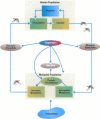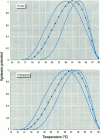Abstract
The biological activity and geographic distribution of the malarial parasite and its vector are sensitive to climatic influences, especially temperature and precipitation. We have incorporated General Circulation Model-based scenarios of anthropogenic global climate change in an integrated linked-system model for predicting changes in malaria epidemic potential in the next century. The concept of the disability-adjusted life years is included to arrive at a single measure of the effect of anthropogenic climate change on the health impact of malaria. Assessment of the potential impact of global climate change on the incidence of malaria suggests a widespread increase of risk due to expansion of the areas suitable for malaria transmission. This predicted increase is most pronounced at the borders of endemic malaria areas and at higher altitudes within malarial areas. The incidence of infection is sensitive to climate changes in areas of Southeast Asia, South America, and parts of Africa where the disease is less endemic; in these regions the numbers of years of healthy life lost may increase significantly. However, the simulated changes in malaria risk must be interpreted on the basis of local environmental conditions, the effects of socioeconomic developments, and malaria control programs or capabilities.
Full text
PDF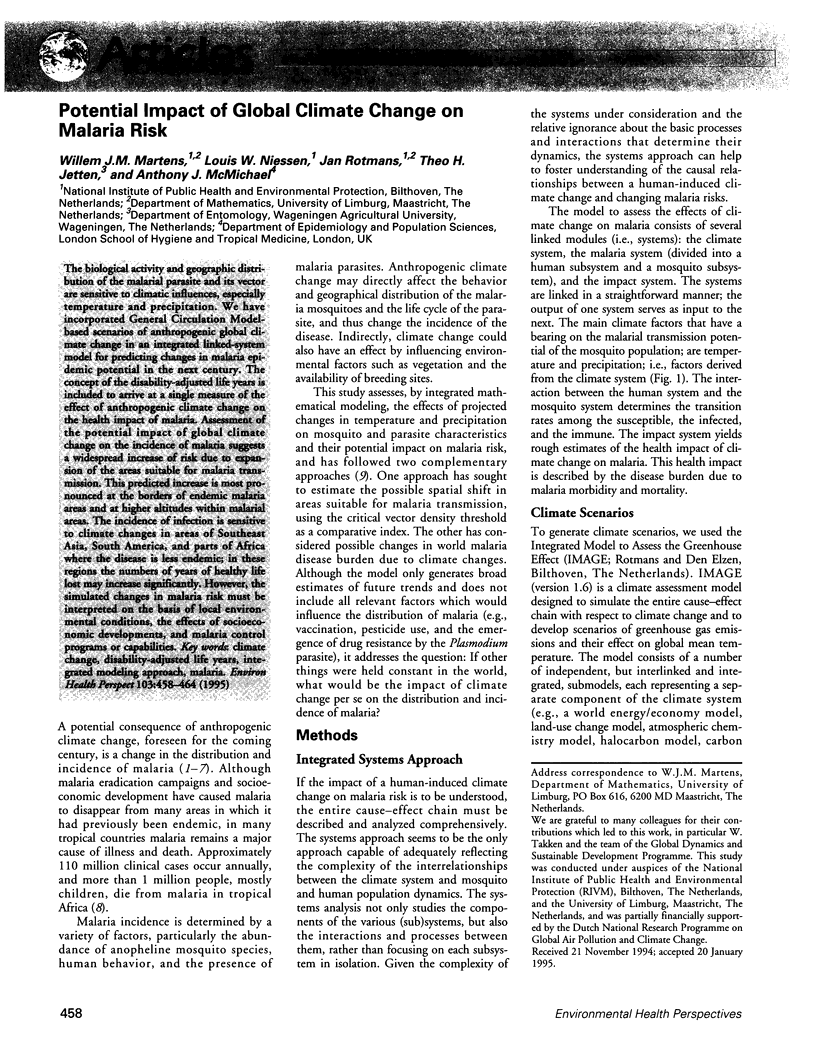
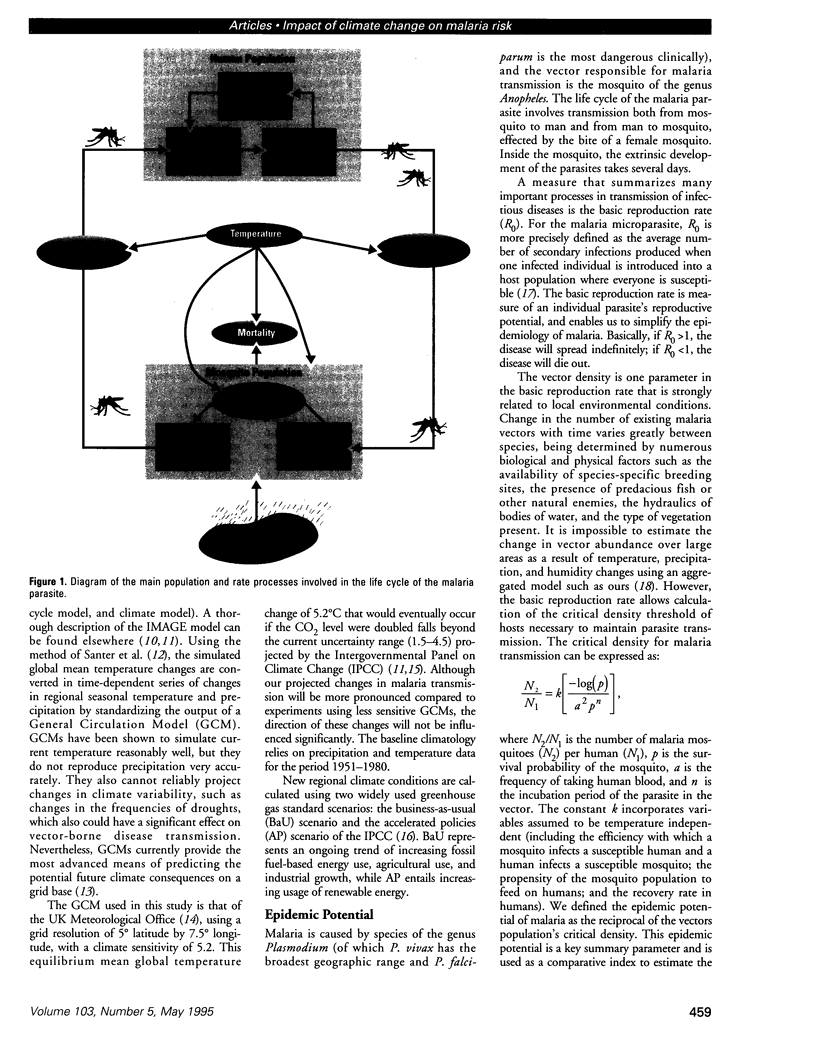
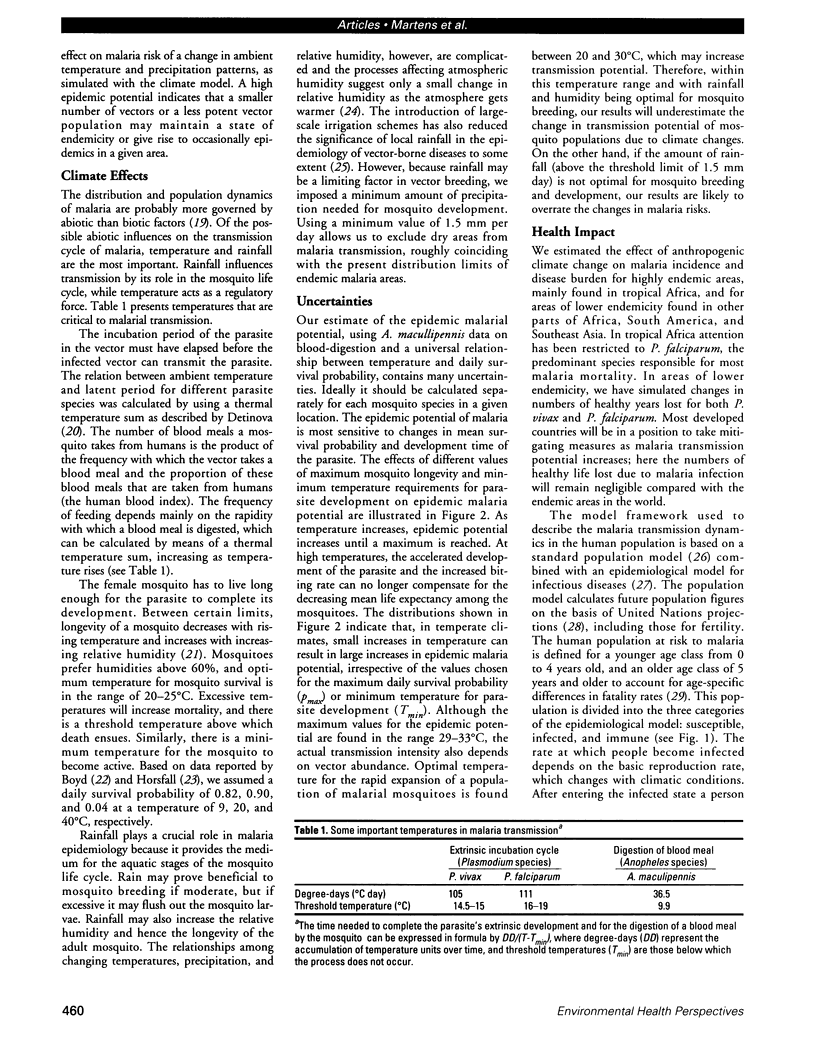
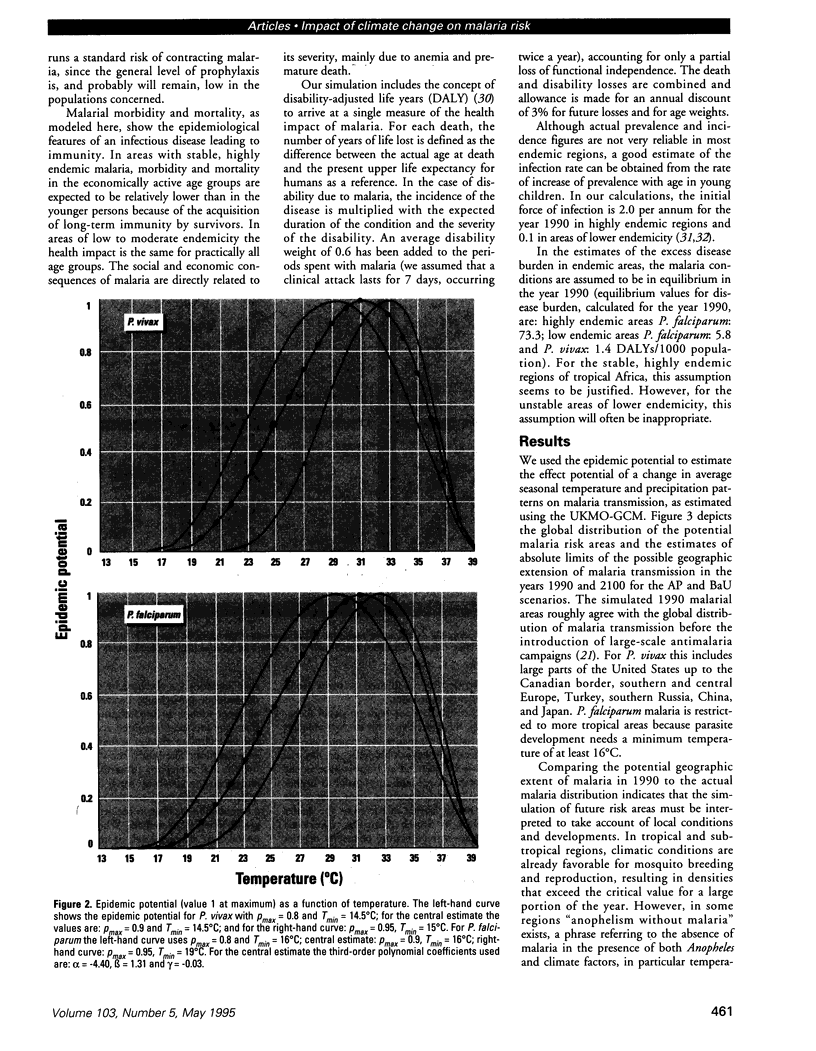
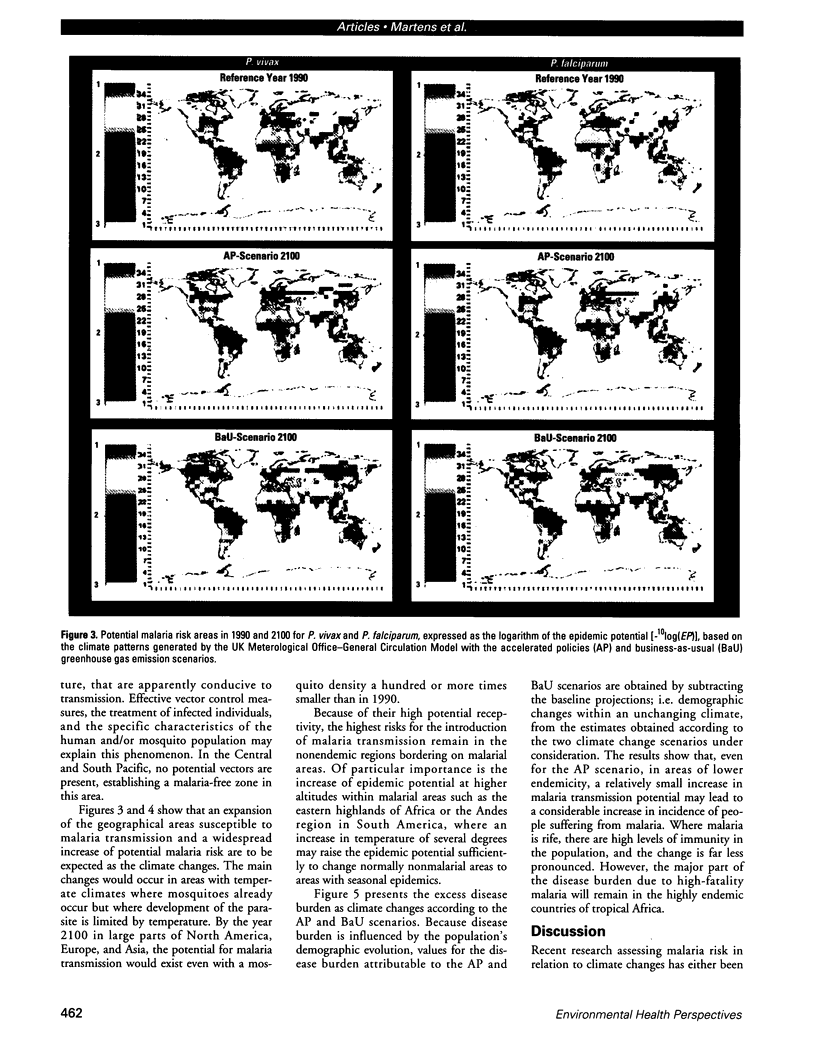
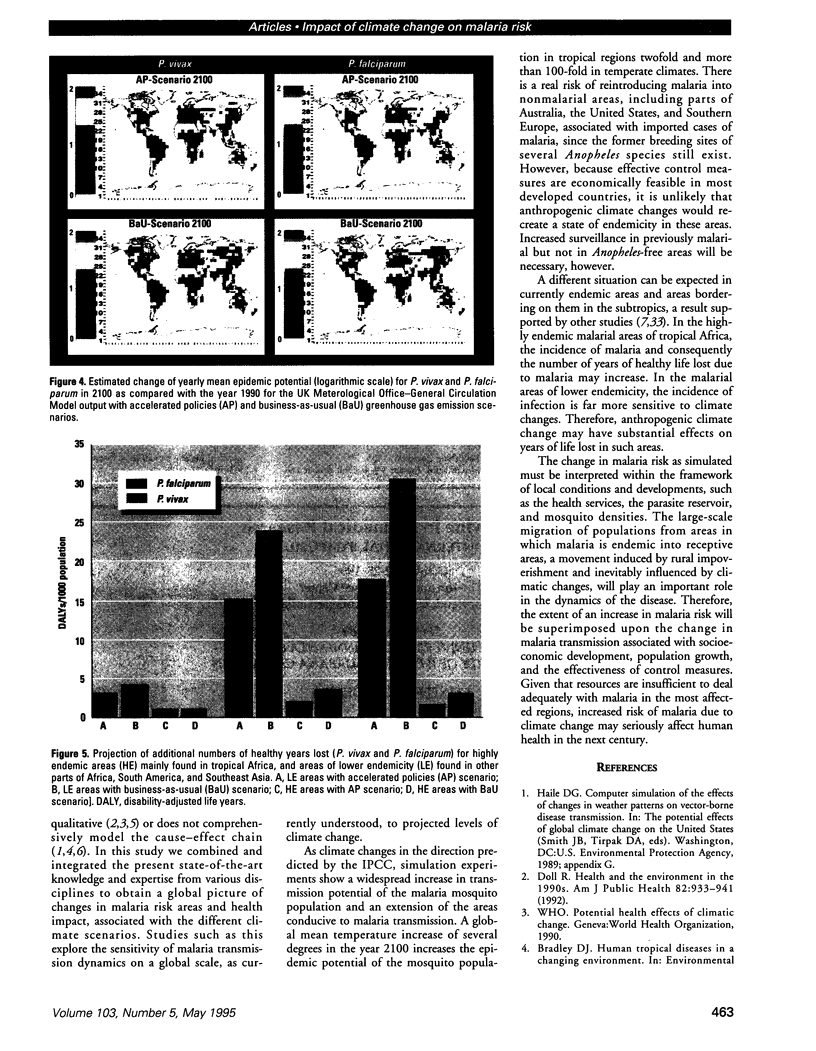
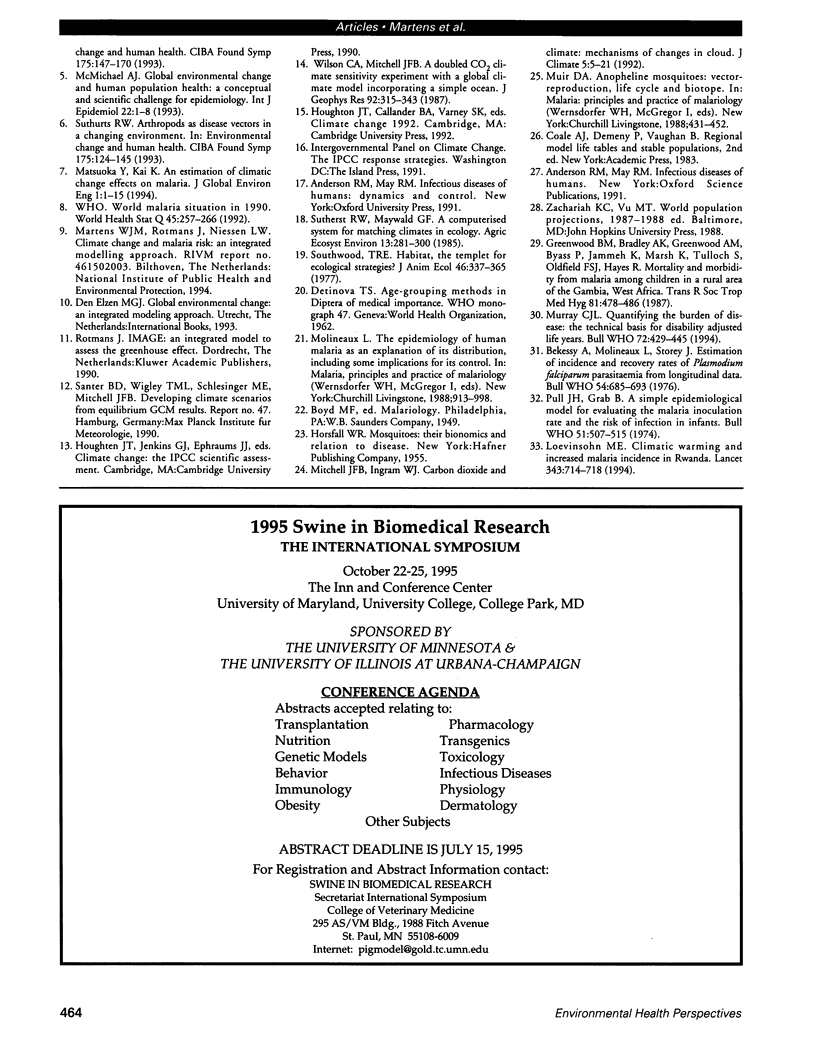
Images in this article
Selected References
These references are in PubMed. This may not be the complete list of references from this article.
- Bekessy A., Molineaux L., Storey J. Estimation of incidence and recovery rates of Plasmodium falciparum parasitaemia from longitudinal data. Bull World Health Organ. 1976;54(6):685–693. [PMC free article] [PubMed] [Google Scholar]
- Doll R. Health and the environment in the 1990s. Am J Public Health. 1992 Jul;82(7):933–941. doi: 10.2105/ajph.82.7.933. [DOI] [PMC free article] [PubMed] [Google Scholar]
- Greenwood B. M., Bradley A. K., Greenwood A. M., Byass P., Jammeh K., Marsh K., Tulloch S., Oldfield F. S., Hayes R. Mortality and morbidity from malaria among children in a rural area of The Gambia, West Africa. Trans R Soc Trop Med Hyg. 1987;81(3):478–486. doi: 10.1016/0035-9203(87)90170-2. [DOI] [PubMed] [Google Scholar]
- Loevinsohn M. E. Climatic warming and increased malaria incidence in Rwanda. Lancet. 1994 Mar 19;343(8899):714–718. doi: 10.1016/s0140-6736(94)91586-5. [DOI] [PubMed] [Google Scholar]
- McMichael A. J. Global environmental change and human population health: a conceptual and scientific challenge for epidemiology. Int J Epidemiol. 1993 Feb;22(1):1–8. doi: 10.1093/ije/22.1.1. [DOI] [PubMed] [Google Scholar]
- Murray C. J. Quantifying the burden of disease: the technical basis for disability-adjusted life years. Bull World Health Organ. 1994;72(3):429–445. [PMC free article] [PubMed] [Google Scholar]
- Pull J. H., Grab B. A simple epidemiological model for evaluating the malaria inoculation rate and the risk of infection in infants. Bull World Health Organ. 1974;51(5):507–516. [PMC free article] [PubMed] [Google Scholar]
- Sutherst R. W. Arthropods as disease vectors in a changing environment. Ciba Found Symp. 1993;175:124–145. doi: 10.1002/9780470514436.ch8. [DOI] [PubMed] [Google Scholar]




